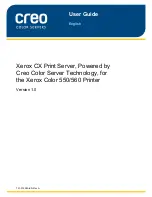
1. Installing Internal Optional Devices
Express5800/R120h-2M (2nd-Gen) User’s Guide
182
Chapter 2 Preparations
1.32
Use of Internal Hard Disk Drives in the RAID System
This section describes how to use the internal hard disk drives in the RAID System.
Important If you use hard disk drives in the RAID System or change the RAID level,
hard disk drives are initialized. If the hard disk drive contains valuable data,
be sure to backup the hard disk drive before installing the RAID Controller
and configuring the RAID System.
Note
Build a Disk Array in the RAID System using hard disk drives that have the same
specifications (capacity, rotational speed, and standard).
Tips
Logical Drives can be created even with only one Physical Device.
When using SAS hard disk drive, SAS SSD, it must be connected to RAID
Controller.
Notes on Building RAID System
Note the following points when building a RAID System.
The number of hard disk drives required varies in each RAID level.
If the optional RAID Controller (N8103-189/195) is used, the RAID System cannot be built in
RAID5/RAID6/RAID50/RAID60.
RAID level
The minimum number of hard disk drives required to set up a RAID
System
N8103-189/195
N8103-190/191/201
RAID 0
1
1
RAID 1
2
2
RAID 5
3
3
RAID 6
4
RAID 10
4
4
RAID 50
6
RAID 60
8
In the RAID System, all the hard disk drives in a group (pack) must have the same capacity, interface type,
and rotational speed.
If you intend to install the OS to the RAID System, the process from RAID configuration to OS installation
can be easily completed by using EXPRESSBUILDER.
If you wish to install the OS manually, use RAID System Off-line Utility (Ctrl-R or HII). For details, see
Chapter 2 (2. RAID System Configuration)
in
"Maintenance Guide"
or the manual supplied with the optional
RAID Controller (N8103-189/190/191/195/201)
Important Build a Disk Array in the RAID System using hard disk drives that have the
same specifications (capacity, rotational speed, and standard).















































